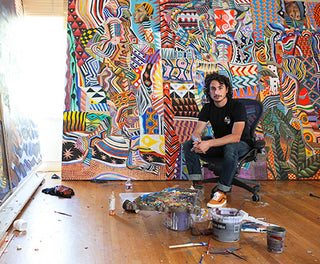I first met Zio Ziegler in November as he was preparing for a solo exhibition at LeQuiVive Gallery in Downtown Oakland. As soon as I walked into the studio, sketches covered the L shaped hallway leading into each room, all filled with works in every stage of creation. In the large open room off of the hallway stood enormous stretched canvases leaning against the walls. I was awestruck by the amount of work – the visit was inspirational.
When the opportunity to write for The Hundreds arose, I knew I had to revisit Zio’s space, catch up, and see some new work for multiple upcoming exhibits and projects. I was, again, reminded of that awestruck and inspired feeling. Upon walking in, there were multi-paneled pieces that took up the far walls of the room, floor to ceiling. The hallway was lined with Vans sample shoes sitting on shelves filled with spray-paint for his upcoming collaboration with the company. The amount of work piled around me nearly blocked the natural light from coming in. Crayons, acrylic paint, oil paint, chalk, and charcoal were scattered over the floor in front of his works in progress.
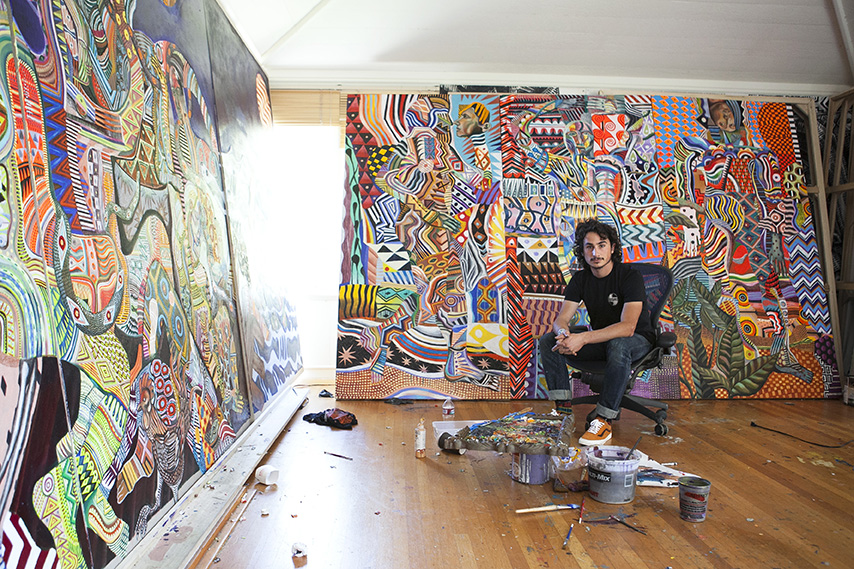
It’s hard to ignore the fact that we are products of our environments. The way things are arranged inside our spaces speak clearly to what kind of state we’re currently living in. In Zio’s case, his space shows he is always working, always studying and developing. He flows between the rooms in his workshop, constantly evolving. The remnants of labor are strewn on the floor: tubes of acrylic and oil paints missing caps, half-used crayons, various bowls and cups filled with mucky water – as if one arrived just after a huge burst of energy, a catharsis, a calm after some sort of storm. The energy put into the work is evident in the amount of frenetic detail and bright colors, yet Zio’s energy is a calm contradiction – Zen. I felt lucky enough to steal time with him and ask some questions below.
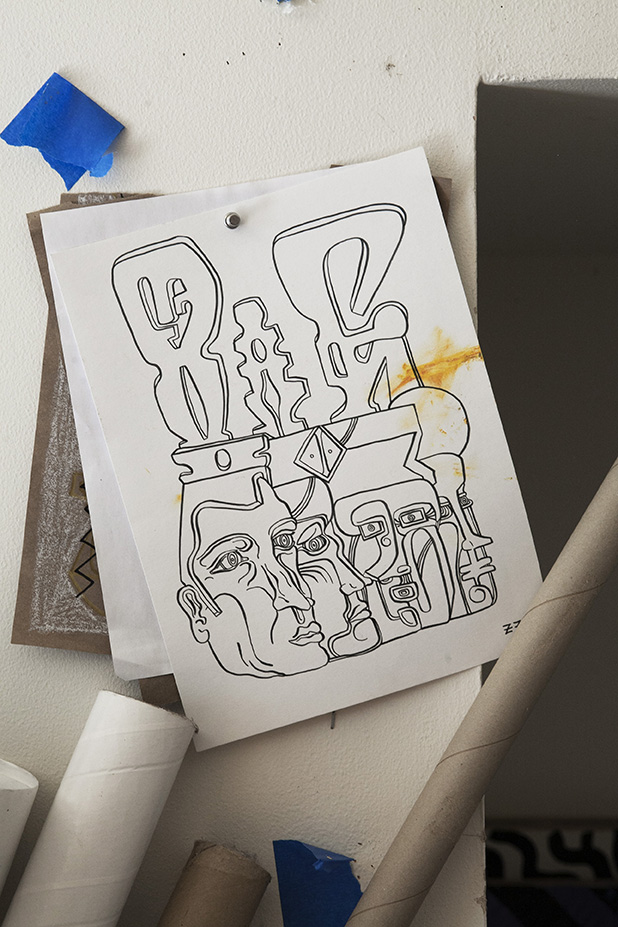
BROCK BRAKE: What is a day in the life of Zio Ziegler like?
ZIO ZIEGLER: When I am in the studio, the day consists of an early coffee, huevos rancheros, then I head up to the studio. I work on a few different canvases simultaneously and often share colors and concepts between the works, and in a similar vein am in the process of reading a few different books during the same period. So I select the audio book and the canvas and dive in until lunch. If I am laying out a new work, I listen to music during its initial stages, and then transition to an audiobook once it’s in the swing of its development. This continues until lunch, when burritos are the obvious choice, perhaps a chai, and back to the studio. Around 4 or 5pm I break for a bike ride, which is a few hours. Either mountain bikes or road bikes, depending on my inclination that day. A lot of thinking and resolution comes about when I take these rides, in which the aspects of the paintings I am struggling with are conceptually resolved, and I rush back to the studio to see if what works in my head functions on the canvas as well. Then I usually eat dinner, often while painting, and work until my eyes close around 1 or 2.
If I’m on the road, I try and catch a run every day, explore as many books stores as possible, but mostly end up just trying to finish my mural before I have to leave.
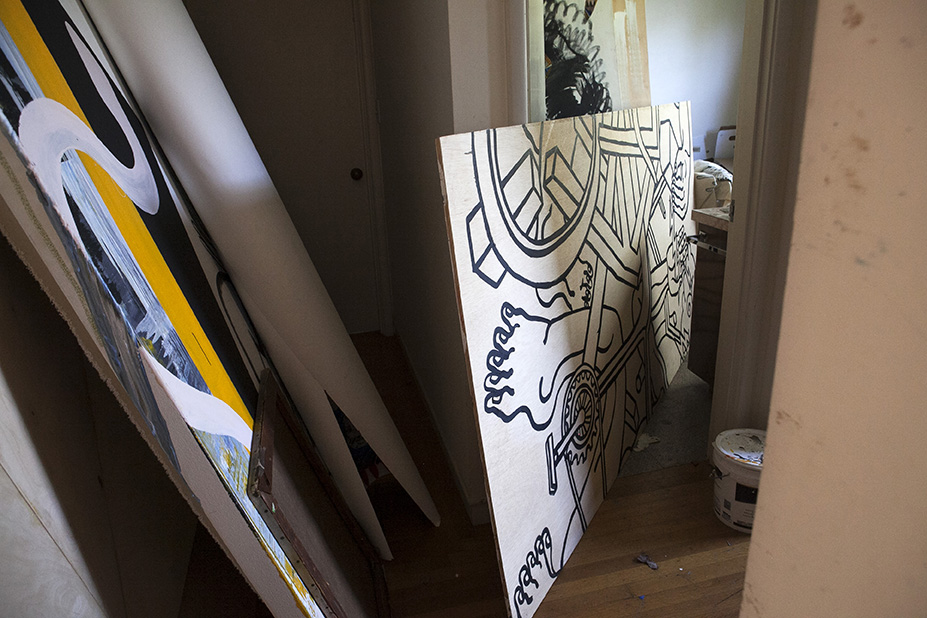
“PAINTINGS BECOME ORGANISMS THAT CRAVE THE CORRECT NUTRIENTS IN ORDER TO ADAPT…”
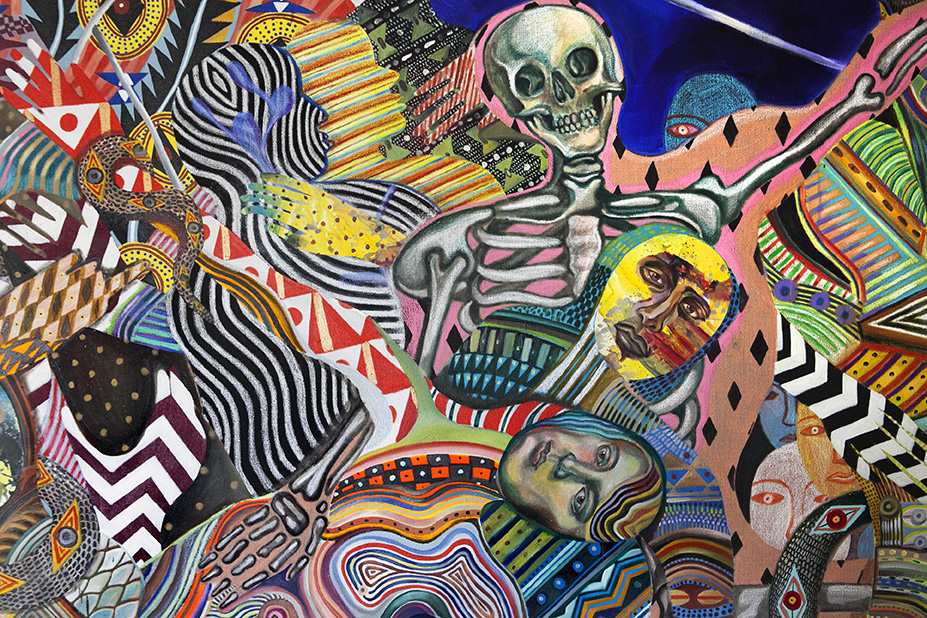
Your work continues to evolve. What direction do you feel it’s heading in currently? How is it different from your work, say, 6 months ago?
It’s always hard to tell where your work is going, but when you care less about the result, it always seems to come out better. I have been searching for more depth of field, more subtlety in color, and a looser more confident line. The first canvas I ever bought was about 7 years ago – it was 40 x 60 inches and I remember going to the art store and saying to myself, “This thing is expensive. If I buy it, I have to use every square inch,” which started a series of incredibly intense paintings, as you can imagine. I come from a background of appreciating graffiti, and silkscreen, and comic books, all which have separated colors for the most part, and a ton of layering – so in turn, everything I was doing was extremely graphic. If I was going to do a fade, it was a gradient of colors which could be screen printed. So my next step into painting was texture, and things which were impossible to capture in a print [with] such a dimension and transparency. Those interests lead me down an interesting path which I am still exploring, and which currently is craving a depth of its own. Paintings become organisms that crave the correct nutrients in order to adapt themselves to your growth as a painter. If you think about the old style, it is a selfish gene – similar to the one Richard Dawkins proposes – craving relevance, and therefore, demanding things from you that satiate your psyche and atheistic principals simultaneously. The painting lives a life of its own, exists by different principals than we do, and the more I think about the canvas as an animate being of its own, the more I realized my behavior towards it can become habitual. It order to disrupt habit, I use new materials, set new restrictions, and impose new challenges, but more importantly, recognize the gravitational pull of what I have done before. In order to accommodate the evolution of a piece, it has to grow elements which are in their turn, outgrown in the next iteration. But like the big bang, there are always unforeseen, almost alchemical coincidences that bring about progress, and it is my job in the following months to deconstruct that anomaly and rebuild it in a way that I understand. In order to understand one’s own etymology of a piece, trace both tendency and risk aversion to their roots, and see how to abandon the latter within reason, and rewire the former with an impunity toward what worked for you before. What will come next should come in the form of an inverted parabola, a spike of creativity, followed by a deconstruction and a rebuilding towards the next daring leap.
Tytler once said the cycle of civilization works as such:
“From bondage to spiritual faith,
From spiritual faith to great courage,
From courage to liberty,
From liberty to abundance,
From selfishness to complacency,
From complacency to apathy,
From apathy to dependency,
From dependency back again to bondage.”
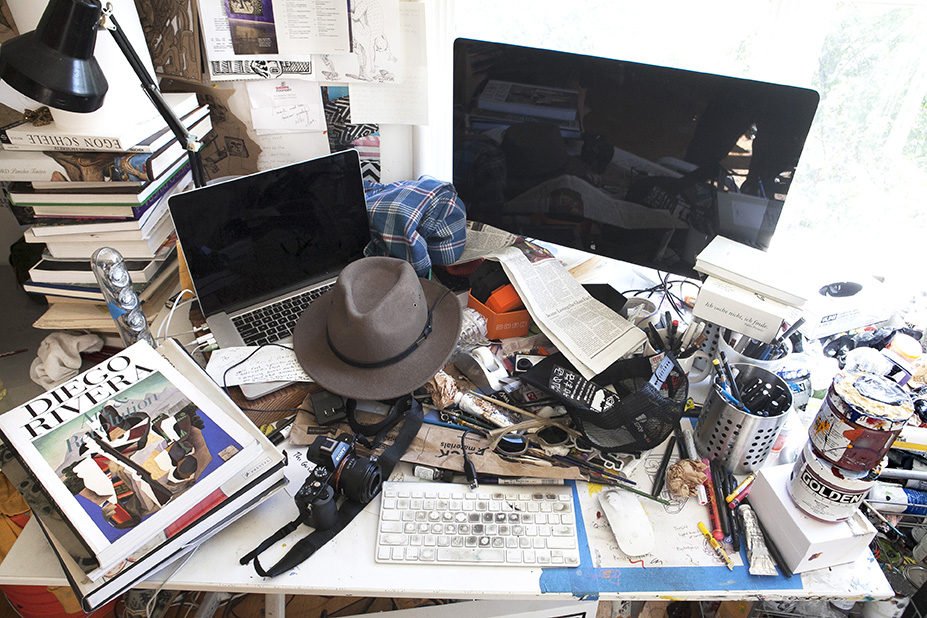
Could you name some artists whose work has caught your eye lately? Why?
I have been a fan of the following artists recently:
Antiquarian: Aegean and Etruscan pottery. Due to the ability to translate myth into linear allegory. Due to complex pattern work and balanced figures.
People that work on walls as well: Ever Siempre, Jaz, Alexis Dias, Interesni Kazki, Gaia, Maturda, Judith Supine, and Axel Void. These guys just always seem to be evolving and progressing in their technical ability and conceptual framework. I am always blown away by what they are all creating.
Canvas and historical: Giacometti, Thomas Houseago, Bill Traylor, The Plains Indians, Peter Doig, Matt Leines, Rich Jacobs, Jeremy Fish, Russ Pope, Chris Ofili, Thomas Campbell, Giotto, Rosson Crow, Erik Parker, etc. All incredible.
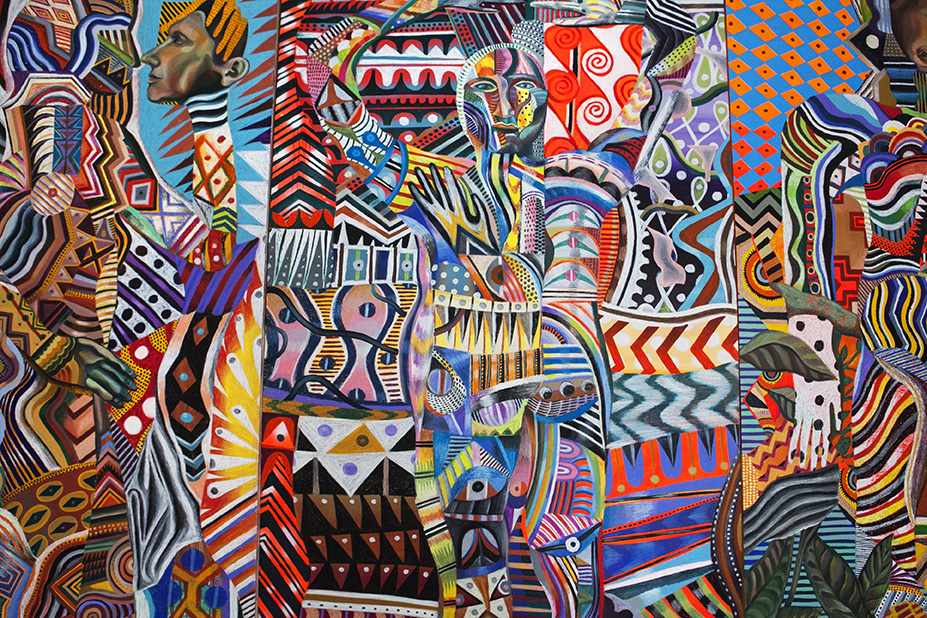
What kind of impact has social media had on your rising art career?
Social media is quite interesting as it allows us to share before we often should. There seems to be a feedback loop which was isolated to the studio visit or exhibition years ago that now takes place instantly. While it is a wonderful device to share with the world, the quantitative aspect of it can be a downside. To see so much art so frequently, to judge the subconscious and subtle marks of a canvas through the pixels on a screen, almost does a disservice to the work – yet the pros outweigh the cons. I think the factor which most effectively represents the dangerous dichotomy of social media is the globalization it perpetrates. Knowledge of society and trends is dangerous to an artist who is trying to operate from a tabula rasa of sorts. This grid of information and quantified art is a world it has become nearly impossible for emerging artists to exist away from, yet it serves such fast road to what you want. Some of my favorite artists throughout history where scorned by society, lived away from civilization, and created art for art’s sake. They hated the art establishment, such as Dubuffet, or were mocked by it [like] Rousseau, yet it is their work that has stood the test of time. I think that this is a proof of the concept that in order to create for posterity’s sake, one must exist outside of the state of man. Social media seems to build these highways from unknown to known to discarded within a few years, or more appropriately within “product cycles.” Artists have become commodified and leveraged and used for economic tricks to the point where it is not the authenticity of their craft and progression which matters, but the amount of insider trading which took place during their auction. This phenomenon of market manipulation has always existed, yet I believe it is perpetrated and accelerated by social media. The over-efficiency of our culture and productization of things we love has forced those that live within a grid to bend and sway with the caprices of culture. With people clawing to popularity and insular acceptance, everyone [forgets] about the actual evolution of the artist. Imagine what social media would have done to the French Modernists, or the Surrealists, or the High Renaissance.
“SOCIAL MEDIA SEEMS TO BUILD THESE HIGHWAYS FROM UNKNOWN TO KNOWN TO DISCARDED WITHIN A FEW YEARS, OR MORE APPROPRIATELY WITHIN ‘PRODUCT CYCLES.'”
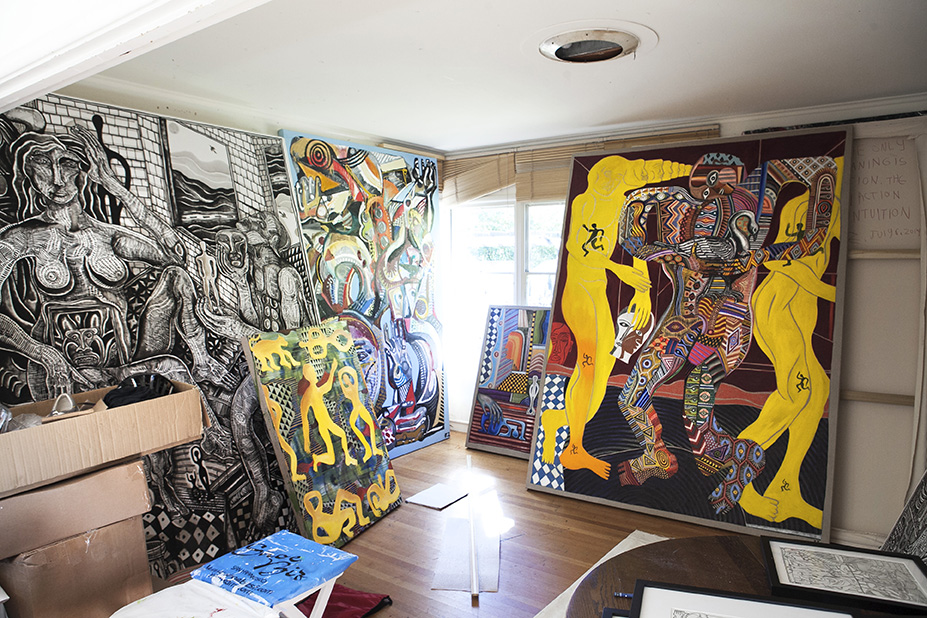
There was always media and self-promotion, but it was the inefficiency of these vehicles which gave an artist time to progress. It was the lack of globalization which allowed certain artists to flourish while others perished under men like Savonarola. Once the soul, and the exploration is taken from art, it becomes akin to an image, and since we all have phones, images are expendable. There is not sanctity around much art because it is so visually accessible. We are not forced to trek across the world on a pilgrimage to see what we have only heard spoken of. And don’t get me wrong, I am all for liberty, but as quoted above, “Abundance leads to selfishness, and selfishness ultimately leads to apathy, which in turn ends up as bondage.” We have become apathetic about many things, for there is very little in the Western world that is considered off-limits or “holy,” and due to this accessibility, we are less effected by the imagery we are overloaded with. It is common practice to now accept the Art Brute movements and cast them aside when they are no longer economically preforming at auction.
“I THINK SOCIAL MEDIA HAS PLAYED A NECESSARY ROLE IN THE COLLAPSE OF SENSITIVITY TOWARDS ART THAT DOES NOT SPEAK TO THE HUMAN CONDITION.”
We live within a new decline of the Roman Empire, but replace the impact that Christianity had with that of social media, and we have our current state. I think conceptual art previously flourished due to the increased accessibility of cameras. The human relationship with the capacity to generate images and [a] necessity for art are directly correlated. Think of the necessity for art in a culture as the displacement of water when one gets in the bathtub. A human being must step into each piece to understand it, yet it is the amount of culture they are exposed to – the water, and the society they live within – and the capacity of the tub, which eventually determine their own personal relationship with images and art. People crave what all do not have, and what all do not have right now is authenticity. Yet it is my belief that as this apathy grows towards imagery, there will be an equal and opposite reaction that emerges. One of spirit in art. Art which is made without a dependence on the grid, which does not have to lean on the crutch of conceptualism or art history or erudition or pop culture in order to be felt or understood. The more selfies we take, the more naked photos are shared around and violent films which are casually watched, the more our sensitivity will be queued by art objects made from authenticity… It is this human instinct to smell our own human condition. which has always saved us in the past, and what I have no doubt will save us again. It is what we cannot understand, what we cannot view on a screen, or articulate in a text, which will be what captures our attention next. So in this way, I think social media has played a necessary role in the collapse of sensitivity towards art that does not speak to the human condition, which like the Gom Jabbar in Dune will differentiate “Images” from “Art,” and allow us to re-enter this cycle from the top.
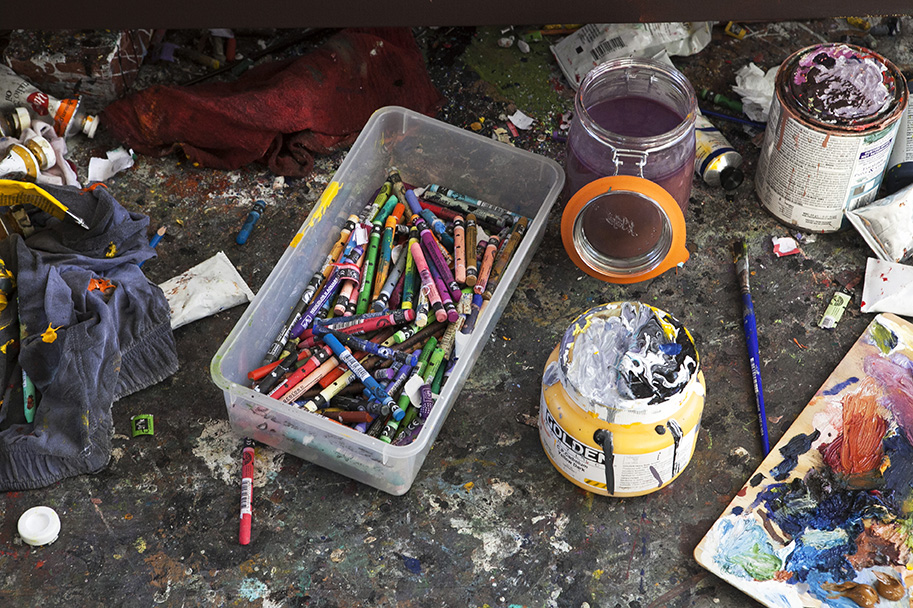
Jules Maeght Gallery is new to San Francisco, but carries a bunch of heavy history along with them from Paris. Can you fill us in on some of the artists they’ve worked with in the past?
They did the first show of surrealism and I believe the Maeght Gallery has worked with Miro, Leger, Giocometti, Francis Bacon, Matisse, Calder, etc.
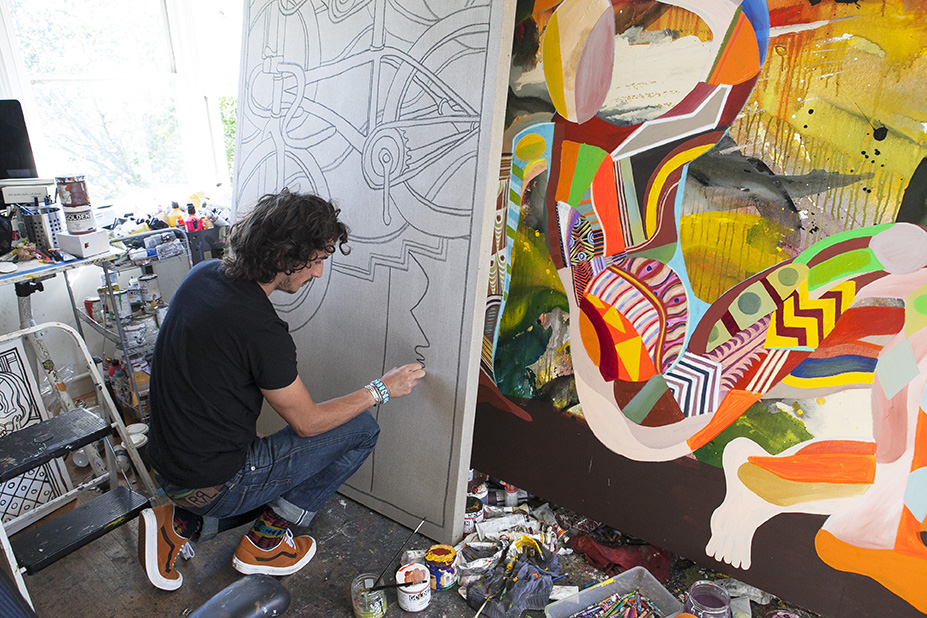
You have two huge pieces in your studio that are multiple panels wide. What’s the story behind these two new massive bodies of work?
Much of this body of work pays homages to historical paintings and allegories I am obsessed with. One of which is the Raft of the Medusa, another Luncheon in the Grass, and a third, a portrait by Velasquez. I thought it would be interesting to play with historical concepts and to reinvent them in a contemporary light, with a different context and conceptual framework. I like to tackle subject matter which has had a presence in art history for time immemorial, yet try and contribute something novel. The pieces use gigantism as a [device] for them to be all-encompassing. I would like the work to swallow you and take you into its world, hand you a new set of senses and new range of principals. I would like to know rules and break them, and then give the viewer new guidelines which only exist within my world. You must almost abandon certain principals in order to discover the imagery used in this work. This paradigm shift in the view is as interesting for me as the creation of the work itself.
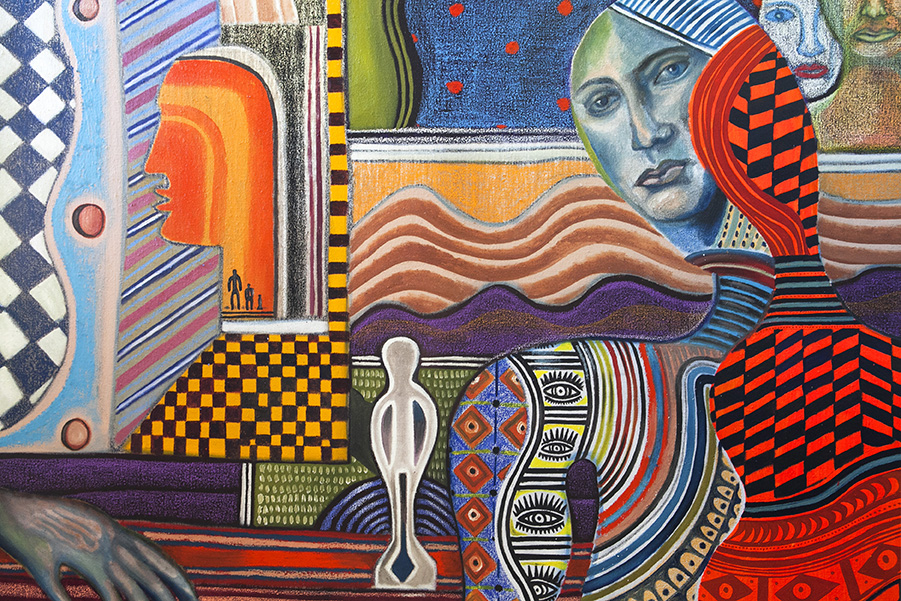
What kind of activities do you partake in outside of making art? What do you like to do for fun?
I ride bikes, I snowboard, I run, I climb, I explore stuff. Yeah, pretty much all stuff that I just do when I am looking for inspiration for paintings, or just need a break from the studio or murals.
Do you think you will always call the Bay Area home?
Can’t live without it.
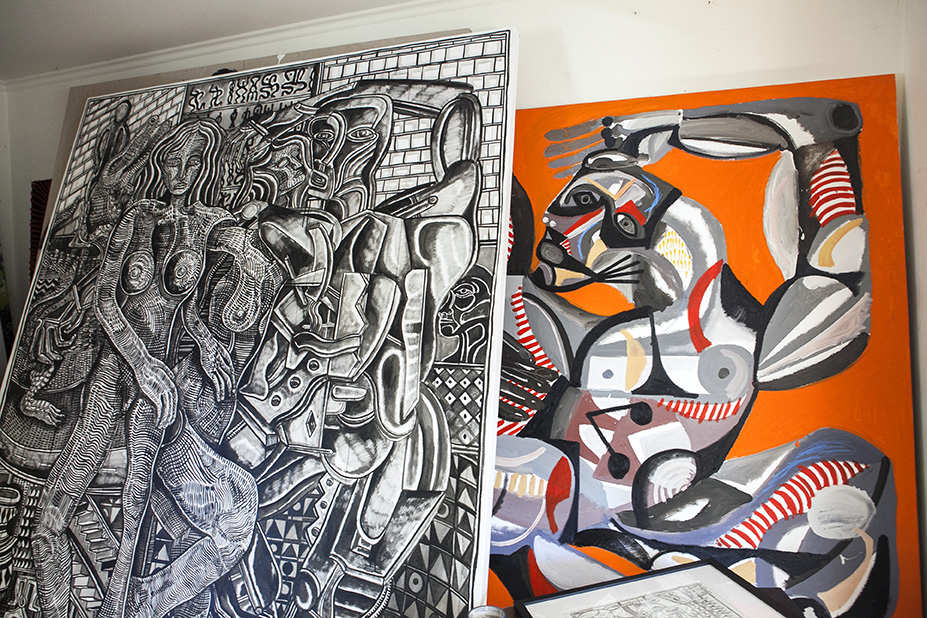
What’s on the agenda for the rest of 2015?
A show and a mural in South Korea, a mural in Irvine, a mural in Switzerland, a mural and a show in Italy, a mural in Germany. One in the Caribbean, a show in LA, a mural in Mexico, etc. with mural locations… A show in Idaho is being discussed, a book release, more T-shirts, a non-profit I’m working on, and some secret projects.
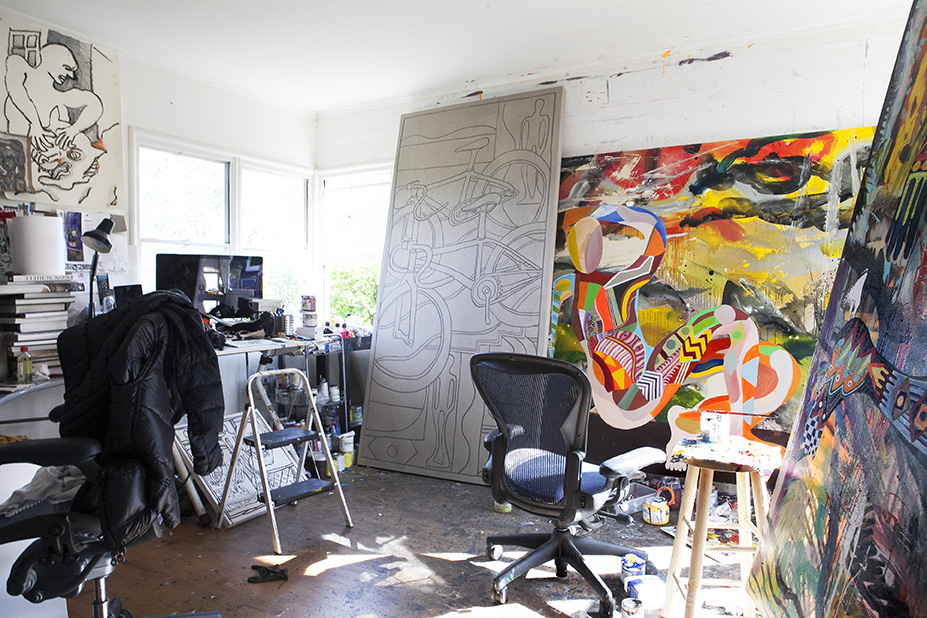
::
Zio Ziegler will be opening a new body of work alongside Paris-based painter Pierre Roy-Camille this week, March 6, at Jules Maeght Gallery in San Francisco. Follow Zio on Instagram @zioziegler.

